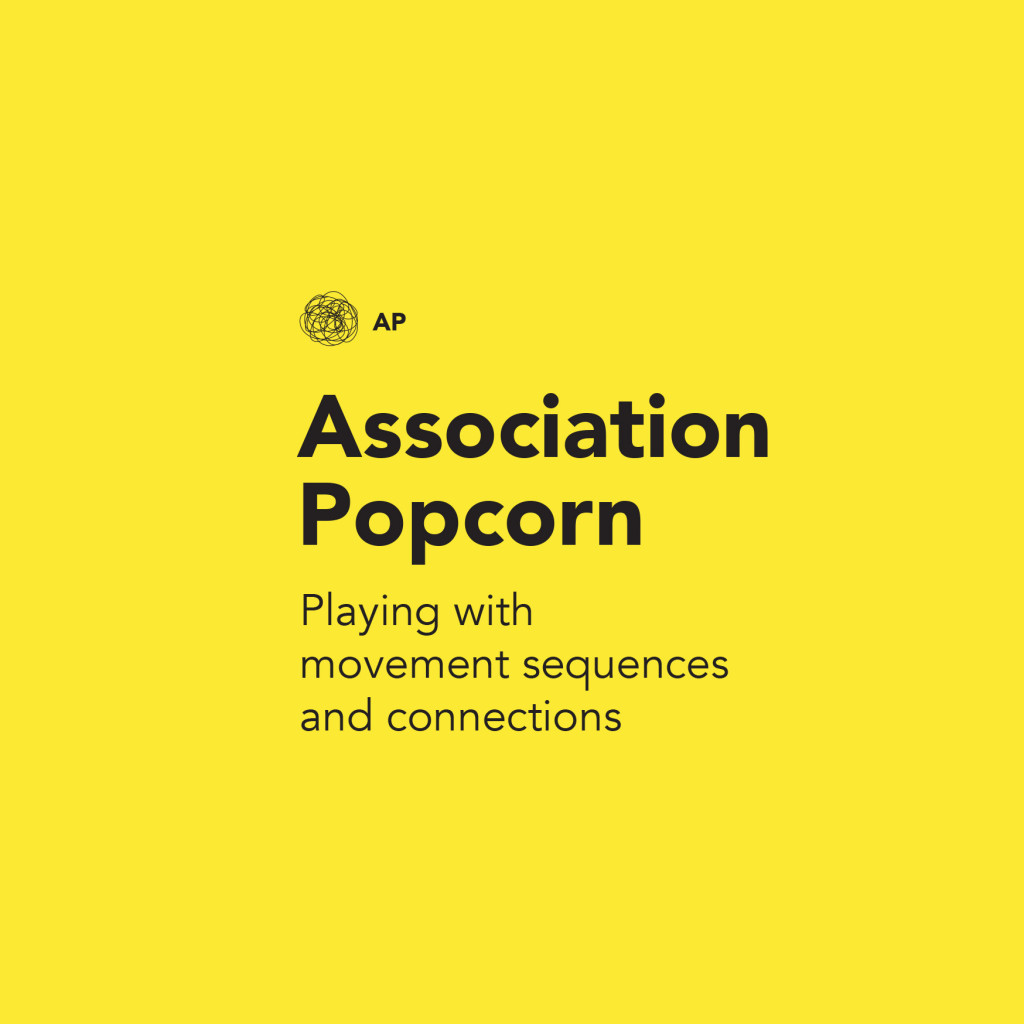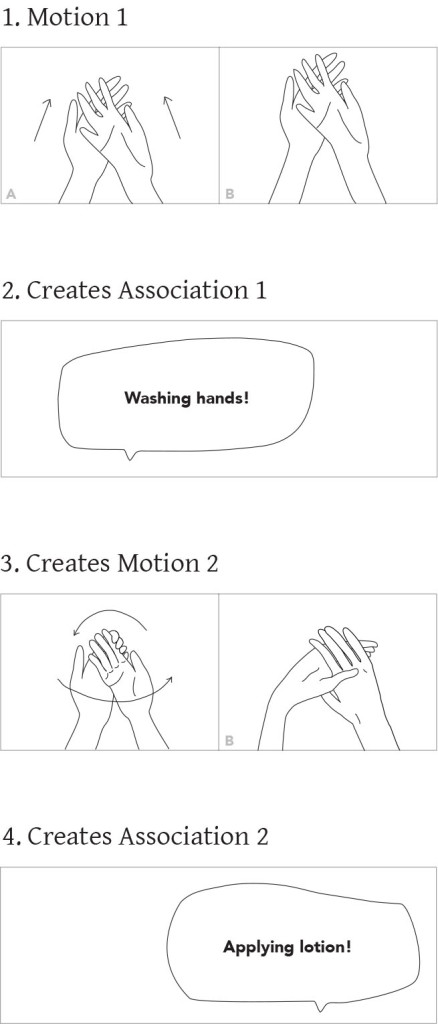
How
Ask a participant to make a simple motion. Invite everyone to mimic the motion to the best of their ability and call out associations that come to mind. An association will spark new, related movements and subsequent associations. The activity is intended to move quickly. Thus, participants should be encouraged to shout anything that comes to mind.
Example

Why
“Memory becomes agent, player, and director. Memory choreographs the recognition of movement” (Brandstetter, 2000: 110). How are movements connected? How does memory re-articulate movement sequencing? How can choreographies transcend time and place? Association Popcorn looks to build collective movement sequences that explore these questions.
Reflections
The activity started off slowly, however after a few associations and movements, people began shouting out ideas without much hesitation. I noticed a few individuals were more comfortable speaking up than others. If I do this activity again, I would ask people to pass the movement to one person in particular. The receiver then either needs to say an association or change the movement slightly to create a new association. The activity was suitable for people with limited physical mobility as they were able to participate without having to physically mimic the motion. Association Popcorn suggests a re- articulation of movement sequencing when considered through the lens of memory and association. It also highlights how cultural and gendered movements can be carried throughout time. For instance, a participant made a motion that sparked one woman to comment, “Washing a counter-top,” and a man to add, “Washing a car.” While the man is not physically capable of washing a car presently, due to a muscular disorder, he carries the gendered movement association with him.
References
Brandstetter, G., (2000), ‘Choreography as a Cenotaph: The Memory of Movement’, in Brandstetter, G., and Völckers, H. (eds), ReMembering the Body, Ostfildern- Ruit: Cantz.